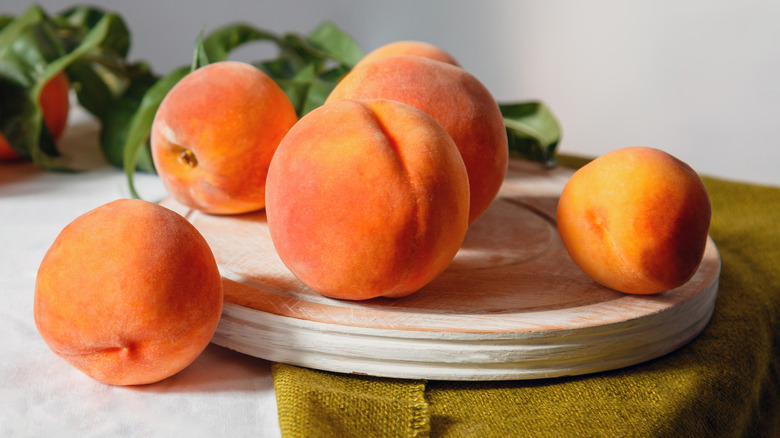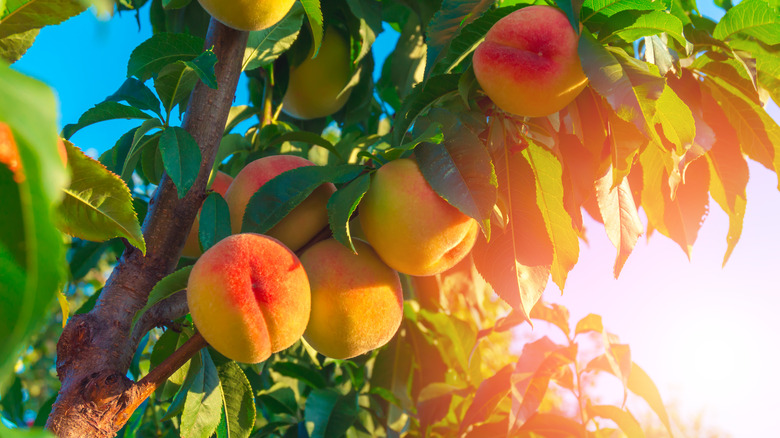How Peaches Arrived In The US
Peaches epitomize the summer season. The fuzzy, bright orange flesh of the fruit absorbs the sun's rays, ripening into sweet perfection. The peach's aroma and juicy "shlurp" in each sun-ripened bite are satisfyingly delicious. Peaches are readily available during the summertime, so the facts about when and where this fruit made its way into America have probably never crossed your mind.
The Prunus Persica, better known as the peach, grows in the warm regions of both the Northern and Southern hemispheres (via Brittanica). According to Explore Georgia, peaches originally came from China. They were traded along the Silk Road until they landed in Europe.
Surprisingly, The Tree Center tells us that the peach tree was America's second invasive plant species. Peach trees come from humble beginnings. This is the story of how the fuzzy fruit made its way onto American soil.
The history of the peach
According to the Smithsonian Magazine, Spanish conquistadors introduced peaches to North America in St. Augustine, Florida, during the mid-1500s. From there, missionaries planted peach trees around the area, helping to further spread the fruit crops. The Creek, Seminole, and Cherokee tribes recognized peaches for their versatility. They soon began using them to nourish and treat body ailments (via Slate).
By 1607, peaches were prevalent all around Virginia. The fruit grew so rampantly that in 1700, John Lawson, the English explorer and naturalist, said, "they make our Land a Wilderness of Peach-Trees." (via Smithsonian Magazine)
Before the Civil War, the peach tree remained contentious in Southern agriculture (via Slate). However, in 1858, Belgium immigrants Louis and Prosper Berckman changed that by opening the first horticultural nursery in Augusta, Georgia (via Georgia Encyclopedia). They bred and imported peaches and introduced a variety of plants to the Southeast.
Prosper used the warm southern climate to his advantage and created peach varieties that could thrive in these hot conditions. The varieties included the Chinese Cling, South Chinese, Honey, Belle, Thurber, and Elberta peaches. Soon, he became known as the "Father of Peach Culture" across the south (via Georgia Encyclopedia).
In 1922, Georgia peach blossom festivals were held, celebrating the prosperity of the fuzzy fruit. The elaborate festivities helped maintain the peach industry and its reputation in the south (via Smithsonian Magazine). Throughout the years, hearty yet fragile peach crops have struggled to combat frigid temperatures, pests, and fungal diseases. However, many crops conquered these conditions and provided substantial abundance.
Today, thanks to the Spanish conquistadors and their quest to America, peaches are enjoyed in many American recipes. Some of the nation's top eateries incorporate peaches into their dishes, including New York's Per Se, California's The French Laundry, and Bayou Bakery in Washington D.C. (via Explore Georgia).

